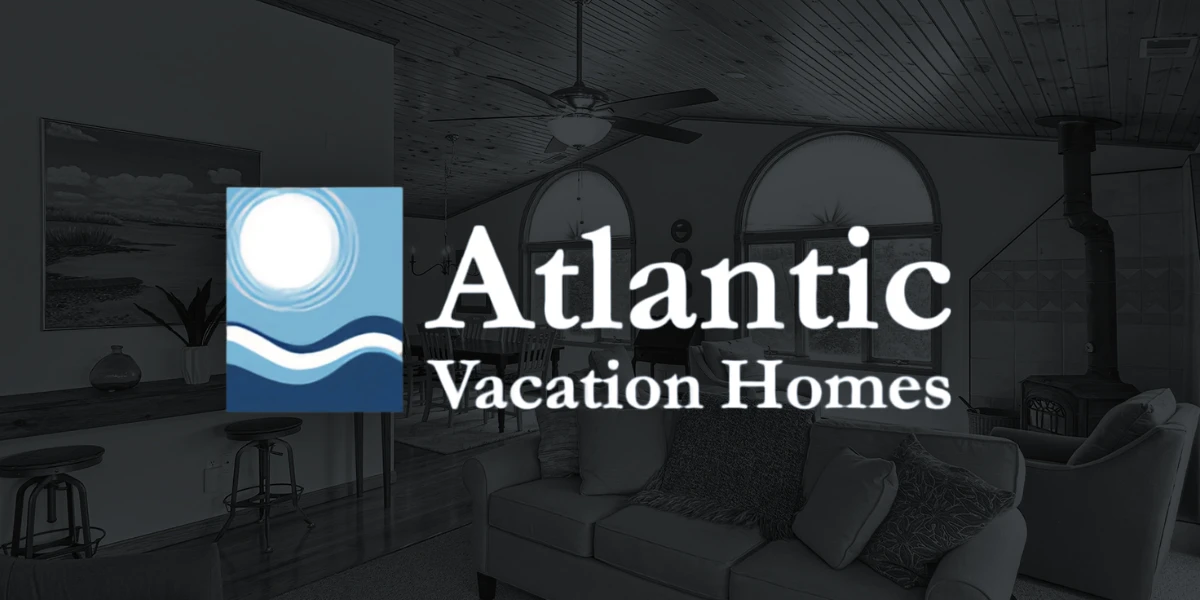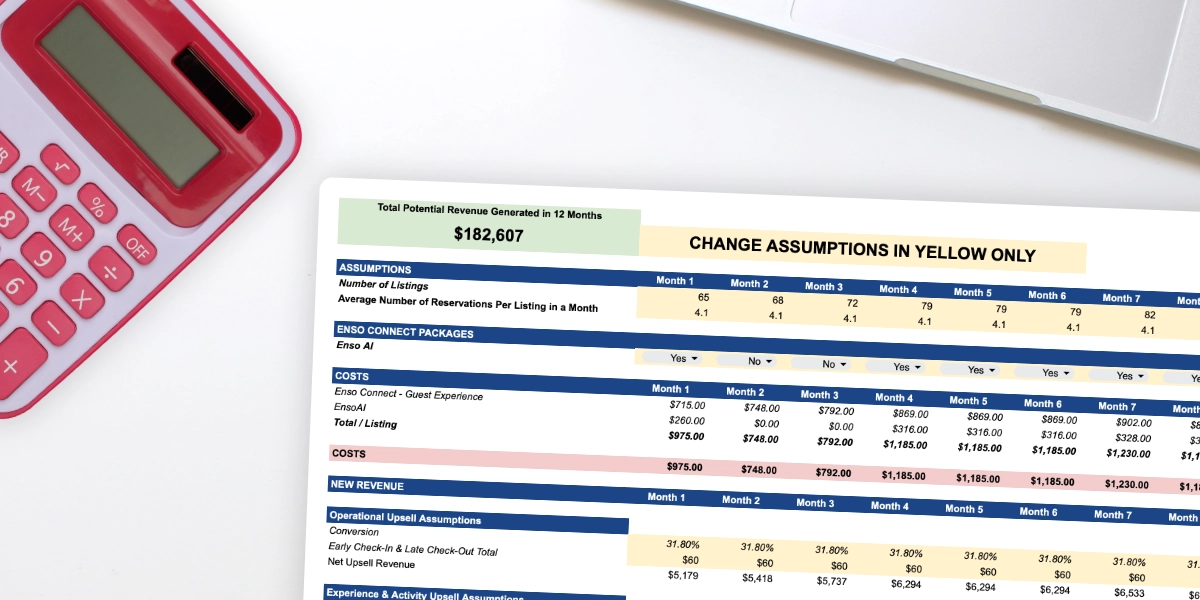$100K Extra Revenue?
See how 50+ units can earn it in 1 year.
In today’s competitive market, maximizing revenue in short-term rental businesses is more crucial than ever. To stay ahead, hospitality professionals must continuously adapt and innovate to capitalize on every available booking opportunity.
One effective strategy for boosting income involves identifying and filling gap nights—those tricky single nights that fall between longer bookings. These gap nights can often be overlooked, but they present valuable opportunities for increasing occupancy and revenue. By strategically targeting and pricing these nights, rental operators can optimize their booking calendar and reduce unproductive gaps.
Implementing techniques such as dynamic pricing, last-minute deals, or special promotions can help attract bookings for these gap nights. Additionally, leveraging technology and booking platforms that offer advanced features for managing and filling these gaps can further enhance your ability to maximize revenue. By focusing on these often-overlooked opportunities, rental operators can significantly improve their occupancy rates and overall financial performance.
Understanding Gap Nights
Gap nights in short-term rentals refer to the vacant days between bookings on a property’s calendar. These are also known as “orphan days”, “orphan nights” or “booking gaps”. Filling these gap nights is important for vacation rental professionals to maximize occupancy and revenue.
Some key points about gap nights:
- Gap nights occur when the minimum stay requirement exceeds 1 night, leaving vacant days between bookings. For example, if the minimum stay is 2 nights and there is a booking from Monday-Wednesday, the Thursday night would be a gap night.
- Owners can offer discounted rates on gap nights to incentivize guests to book and fill those vacant days. Even with a deep discount, this is “found money” since there are no additional fixed costs like cleaning fees.
- Owners can use dynamic pricing and adjust minimum stay requirements to help prevent and fill gap nights. Offering a discounted rate, early check-in, or late check-out are other tactics to fill gap nights.
- Gap nights can be a significant source of lost revenue if not managed properly. It is recommended to use vacation rental software like PriceLabs, providing tools to help identify and fill gap nights automatically.
Short-term rental professionals always aim to fill in order to maximize occupancy and revenue for their short-term rental properties.
The Financial Impact of Gap Nights
How Gap Nights Affect Overall Revenue
The unbooked nights between two reservations, can significantly impact the revenue potential of short-term rentals. Here’s how these breaks in occupancy impact your business and why you should be monitoring and addressing this.
Lost Revenue Opportunities
Each unbooked night represents a direct loss of potential income. For instance, if a property typically earns $200 per night and experiences five gap nights in a month, the business loses $1,000 in revenue that month. This loss is not just a minor detail; it can add up significantly over time, impacting the overall profitability of the business.
To illustrate further, consider a property with a higher nightly rate or more frequent gap nights. The cumulative effect of these unbooked nights can lead to substantial revenue shortfalls, especially during peak seasons or when operating at high capacity. For properties with multiple units or those that experience frequent turnover, the impact of unbooked nights can compound, further emphasizing the need to address and manage these gaps proactively.
By recognizing the financial implications of unbooked nights, you can better understand the importance of implementing strategies to minimize these occurrences. Employing tools and techniques to fill gap nights can help safeguard against revenue losses and contribute to a more stable and profitable short-term rental operation.
Operational Costs
While the property remains vacant, fixed costs such as mortgage payments, utilities, and maintenance continue to accrue. This ongoing expense effectively increases the cost per booked night, as the revenue generated from the booked nights must cover these fixed costs.
For example, if you have a monthly mortgage payment of $1,500, utilities costing $200, and maintenance expenses of $100, these fixed costs total $1,800 each month. If you only book 10 nights out of the month, the cost per booked night rises to $180 ($1,800 divided by 10 nights), which can significantly impact your profitability.
The more gap nights you have, the higher the effective cost per booked night, which reduces your overall profit margins. Therefore, minimizing the number of unbooked nights not only helps in maximizing revenue but also in distributing these fixed costs more efficiently across the nights you do book, ultimately improving the profitability of your short-term rental business.
Pricing Strategy
Property managers or investors often reduce prices to fill gap nights, a common strategy aimed at maintaining high occupancy rates. While this approach can help fill vacancies and avoid having unbooked nights, it can also lower the average nightly rate and overall monthly revenue.
By discounting prices to attract bookings for gap nights, the revenue per night decreases, which can affect your monthly earnings. For instance, if you typically charge $200 per night but lower the rate to $150 to fill a gap night, your revenue per booking is reduced. If these discounted rates become frequent, they can significantly lower your average nightly rate.
Moreover, while reducing prices might help fill the calendar, it might not always cover the full operational costs. Fixed expenses such as mortgage payments, utilities, and maintenance continue to accrue regardless of the nightly rate. Consequently, if the discounted rate does not fully compensate for these costs, it can lead to diminished profitability. This underscores the importance of balancing pricing strategies with cost management to ensure that filling gap nights contributes positively to your overall financial performance.
Seasonal Fluctuations
During peak seasons, the impact of gap nights is more pronounced due to the higher demand and potential earnings per night. For example, if a property can command $300 per night during a peak season but experiences several unbooked nights, the revenue loss per gap night is significantly greater. This loss is compounded by the fact that each unbooked night represents a missed opportunity to capitalize on high demand and maximize earnings during these lucrative periods.
Conversely, during off-peak times, the financial impact of gap nights might appear lower due to reduced nightly rates. However, the effect of prolonged vacancies can accumulate substantial revenue losses over time. Even if each gap night during the off-peak season costs less in terms of missed revenue, the extended duration of these gaps can lead to significant overall revenue shortfalls. This accumulation of lost income can add up and impact your financial performance, emphasizing the need for effective strategies to minimize vacancies throughout the year.
Understanding the varying impacts of gap nights across different seasons allows property managers and investors to tailor their strategies accordingly, ensuring that both peak and off-peak periods are managed efficiently to optimize revenue and minimize losses.
Long-Term Impact
Frequent gap nights might indicate issues with pricing, property appeal, or marketing strategies, which could affect long-term occupancy rates and the property’s reputation in competitive rental markets.
Calculating the Opportunities of Gap Nights Revenue
Let’s review and example of gap nights opportunities to understand the financial implications
To calculate the opportunity of adding a gap night upsell in a hospitality business, we need to first determine the total number of nights available, the nights booked, and then estimate the number of potential gap nights that could be filled. Let’s walk through the calculations with the given data:
Data Overview:
- Number of listings: 10
- Average nightly rate: $200
- Occupancy rate: 75%
- Days in a year: 365 (for simplicity, we’ll assume non-leap year)
Step 1: Calculate Total Nights Available
Total nights available per year for all listings = Number of listings × Days in a yearTotal Nights Available=10×365=3,650 nightsTotal Nights Available=10×365=3,650nights
Step 2: Calculate Nights Booked Per Year
Nights booked per year = Total nights available × Occupancy rateNights Booked=3,650×0.75=2,737.5 nightsNights Booked=3,650×0.75=2,737.5nightsFor simplicity, let’s round this to 2,738 nights.
Step 3: Estimating Gap Nights
Gap nights are typically the single nights available between two bookings that are harder to fill. The exact calculation of gap nights would require detailed booking data to see exactly how bookings are distributed throughout the year. However, we can make a simplified assumption that 10% of the nights left (unbooked nights) could potentially be gap nights that could be targeted for upselling.
Unbooked nights per year = Total nights available – Nights bookedUnbooked Nights=3,650−2,738=912 nightsUnbooked Nights=3,650−2,738=912nights
Estimated gap nights = 10% of unbooked nightsEstimated Gap Nights=0.10×912=91.2 nightsEstimated Gap Nights=0.10×912=91.2nightsRounding this, we get approximately 91 gap nights.
Step 4: Potential Revenue from Gap Nights
Potential revenue from filling all gap nights = Number of gap nights × Nightly ratePotential Revenue=91×200=$18,200Potential Revenue=91×200=$18,200
Conclusion
By potentially filling these 91 gap nights, the vacation rental operator could potentially add an extra $18,200 to their annual revenue. Implementing a strategy to upsell these gap nights, perhaps by offering special deals or promotions, could help in capturing this additional revenue.
How to Avoid Gap Nights in Short-Term Rentals
Adjust Minimum Stay Requirements
- Set flexible minimum stay requirements that can adapt to demand and booking patterns. Require longer minimum stays (e.g. 3-4 nights) for peak periods, but allow shorter 1-2 night stays during slower periods.
- Use “adjacent day” booking rules to allow shorter stays that don’t create gap nights, such as a 1-night booking before or after an existing reservation.
- Offer discounted rates on “last-minute” bookings within a certain window (e.g. 7 days) to incentivize shorter stays and fill gap nights.
Use Dynamic Pricing
- Implement dynamic pricing strategies that automatically adjust nightly rates based on demand, seasonality, and booking windows. This can help prevent and fill gap nights.
- Offer discounted rates on gap nights to make them more appealing to guests and increase bookings.
Automate Gap Night Management
- Use vacation rental software like PriceLabs that can automatically identify gap nights and Enso Connect to send personalized offers to guests to fill them.
- Set up automated email templates and triggers to offer discounted rates or extended stays to guests already booked before/after a gap night.
Promote Gap Night Deals
- Proactively market discounted rates or extended stay offers for gap nights on your listing, website, and social media.
- Reach out directly to guests with upcoming bookings to offer deals on adding an extra night and filling the gap.
Example of driving gap night revenue – High Street Townhouse
By strategically filling gap nights, short-term rental managers and investors can boost occupancy rates. A prime example of this successful approach is High Street Townhouse in Manchester, which consistently achieves an impressive occupancy rate of 90%. This demonstrates the effectiveness of targeting and filling these single-night vacancies in enhancing overall occupancy.
Boost Your Revenue and Guest Satisfaction with Our Gap Night Automation





